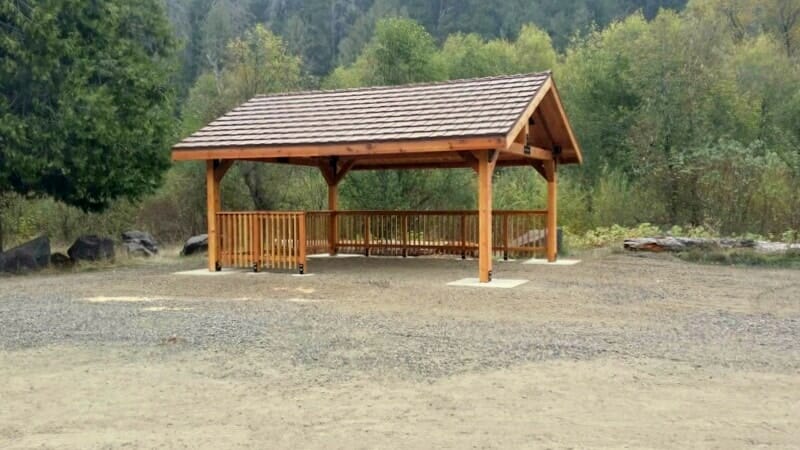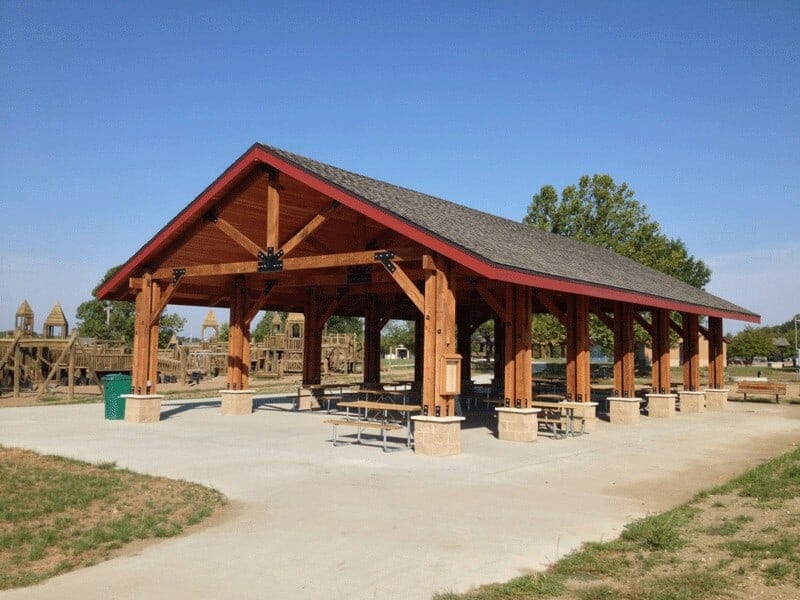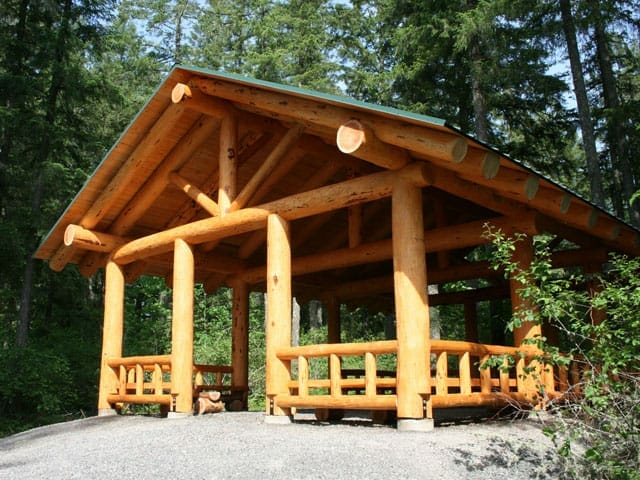
Romtec supplies pavilions of all shapes and sizes, constructed from logs, steel beams, timber posts, and many other materials. Romtec can design pavilions with slab foundations or with concrete footings on the column posts. On most projects, the foundation is designed to meet the preferences of the customer. If the pavilion is going to include picnic tables, a flat, concrete foundation surface is likely going to be preferable. In a beach or sandy application, the natural surface of the ground may be preferable to experience the park. Beyond the qualities of the surface, however, the foundation design can play into the functionality of a pavilion.

Pavilions by their very nature are more exposed to elements of weather than typical a structure. These elements include temperature, moisture, and sunlight. In addition to exposure, pavilions also lack the same rigidity as a walled of building. With these two factors occurring with most pavilions, it becomes very likely that over its lifespan a pavilion will shift and adjust with expansion and contraction caused by changing weather conditions. Structurally speaking, the pavilion is designed to withstand these changes without experience any issues. This type of movement can be problematic for slab foundations.
Concrete has low flexibility. If pavilion posts are installed into a slab foundation, as the posts adjust with expansions and contractions the forces are applied to the concrete foundation. In some circumstances, this can cause the foundation to crack. The better approach is to begin the pavilion design with footings for the posts. Footings structurally tie the pavilion to the ground while also providing more freedom of movement to the pavilion.

Concrete Footings for Pavilions
Romtec designs most pavilions with concrete footings in the initial design phase. If a slab foundation is preferable, expansion joints made of a special felt material can be wrapped around the footing and a slab can be poured. This creates a buffer between the footings and the slab. Giving the structure stability and flexibility while not creating stress against the rigidity of the concrete slab. Designing Pavilions with footings early in the project also creates design diversity later on in the process. With footings being used for the structural foundation, the ground surface can be changed at any time without requiring a structural redesign. This can include adding a concrete slab, brick, paver stones, wood decking, or many other options.
Movement and settling in a structure vary with construction materials, geography, soil composition, and many other factors. It can be difficult to know how much a structure will move and when it will move. Concrete footings installed with each column post provide a robust enough foundation to last for the lifespan of the pavilion while drastically mitigating the risk of a crack in the slab. Additionally, concrete footings provide pavilion owners with the ability to change the ground surface of the pavilion as they wish.
Contact our Sales team today to further discuss this topic!
